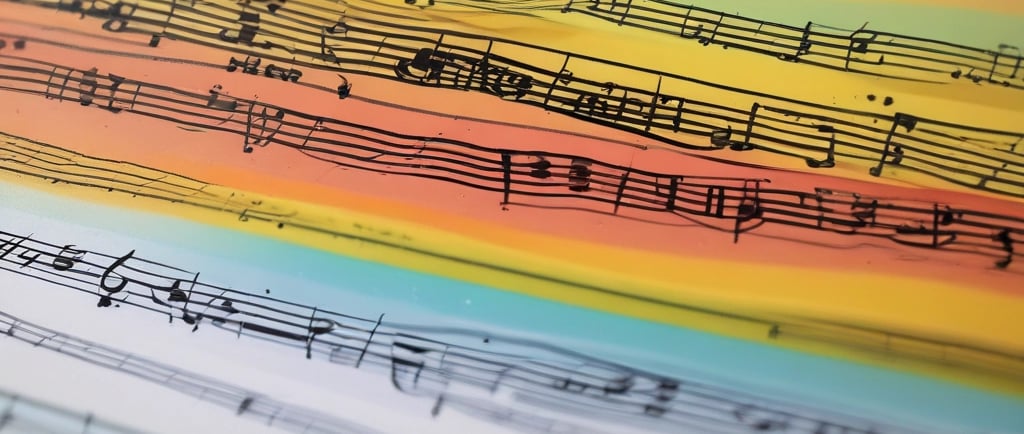The Repertoire of Our Wind Bands: Tradition, Innovation, and Collective Memory
This brief article inaugurates the blog by reflecting on the role of wind bands in Spain as true cultural and social driving forces. It examines their repertoire, which ranges from the tradition of pasodobles, marches, and zarzuelas to the contemporary creations of leading modern composers.


To speak of wind bands in Spain is to speak of living history, of roots, of identity, of community, and above all, of collective memory. Since the late 19th and early 20th centuries, when they became essential local institutions, bands have remained a meeting point between tradition and modernity. Few cultural phenomena manage to so naturally bring together the popular and the academic, the festive and the solemn, the traditional and the contemporary.
A Unique Musical and Social Heritage in Europe
Spain has more than 1,500 officially registered wind bands (according to the Spanish Confederation of Musical Societies –CESM–), making it one of the countries with the highest density of bands in Europe. In regions such as Valencia, Andalusia, Castilla-La Mancha, Galicia, or the Canary Islands, bands are true emblems of identity: there is no major festivity, religious procession, or civic celebration without them.
More than the numbers, what truly matters is their sociocultural role. Bands are schools of citizenship, where children, young people, and adults coexist around music, weaving intergenerational bonds that go far beyond culture itself. Ethnomusicologists such as Llorenç Barber and Enrique Cámara de Landa have emphasized how bands function as social laboratories—spaces where communities are built and identities are transmitted.
The Repertoire: A Dialogue Between Tradition and Modernity
One of the enduring questions is: what should a band play? Tradition gives us three fundamental pillars:
Religious and festive ceremonial: processional marches, pasodobles, and local hymns.
Popular entertainment: transcriptions of operas, zarzuelas, and symphonic works that brought “great music” to town squares at a time when radio and cinema were not widely accessible.
Pedagogical function: adapted and didactic works for youth ensembles.
Today, however, the repertoire is far more diverse. Renowned contemporary composers —such as Óscar Navarro, Amando Blanquer, José Suñer Oriola, or Luis Serrano Alarcón— have written original works for band that are performed worldwide. Competitions like the International Band Contest of Valencia or the World Music Contest in Kerkrade (Netherlands) have consolidated the band as a respected format in the symphonic world.
And yet, no one can imagine a summer fair without Jaime Teixidor’s classic pasodoble Amparito Roca, or a Holy Week procession without Abel Moreno’s solemn marches. The true richness lies in balancing tradition and innovation, so that bands remain both guardians of memory and engines of musical creativity.
The Canary Islands: A Singular Case in Band History
Within Spain’s diverse band traditions, the case of the Canary Islands deserves special mention. Since the 19th century, both civilian and military bands have played a central role in island life. As early as 1847, the Filarmónica de Los Realejos was founded in Los Realejos, Tenerife —one of the oldest ensembles in the archipelago. Soon after, similar groups appeared across Tenerife, Gran Canaria, La Palma, and Lanzarote.
What makes the Canary Islands unique is their insular and cross-cultural identity. Bands did not merely reproduce the repertoire of mainland Spain: they blended it with local genres and Latin American influences. Festival programs often featured pasodobles alongside isas, folías, or malagueñas arranged for band, as well as rhythms brought back by Canarian emigrants to Cuba and Venezuela, such as the son or the bolero.
In small municipalities—especially on La Palma or El Hierro—the local band was often the only permanent cultural institution, making it the true backbone of community life. Through them, entire generations learned music and found a space of belonging.
Today, the Canary Islands maintain a vibrant band scene. Local contests and festivals keep alive the tradition of exchanging repertoires, reinforcing that unique blend of heritage and innovation that characterizes the islands.
In short, Canarian bands are a perfect mirror of what bands represent throughout Spain: memory, identity, and community—but with a distinctive flavor all their own.
Bands and Collective Memory: More Than Just Music
The sociologist Maurice Halbwachs, in his theory of collective memory, argued that individual memories do not exist in isolation but within shared social frameworks. Wind bands embody this perfectly: they are vehicles of collective memory.
A pasodoble played in the town square is not just music—it’s the memory of past fairs, of the first time a young clarinetist stepped onto the stage, of neighbors returning home for the festivities. A processional march is not only a score—it’s an emotion handed down from grandparents to grandchildren. And in the Canary Islands, an isa or a folía played by the local band instantly connects an entire community to its island roots.
Each piece in a band’s repertoire is not simply a work to be performed: it is a living archive of shared history, reactivated every time it is played.
Looking Ahead
The challenge for our bands today is twofold:
Preserve and honor tradition, because without memory there is no identity.
Embrace contemporary creation and new audiences, because without innovation there is no future.
That means commissioning new works, opening up to genres such as jazz, film music, or urban sounds, and participating in international competitions. Above all, it means ensuring that bands continue to be social spaces: places where anyone, regardless of age, background, or training, can find a role, a voice, a sound.
Conclusion
The wind bands of Spain—and of the Canary Islands in particular—are not mere festive ornaments. They are living institutions, guardians of collective memory and, at the same time, workshops for the future. Their repertoire is the key that keeps open the dialogue between what we were, what we are, and what we aspire to be.
Because a band is not just a collection of instruments: it is, in truth, the sonic voice of an entire community.